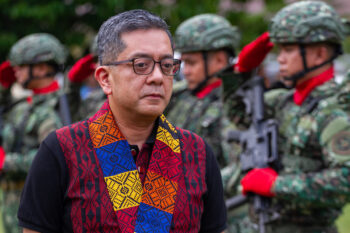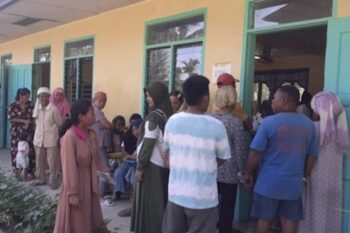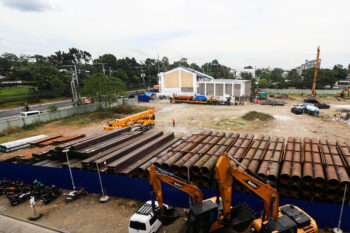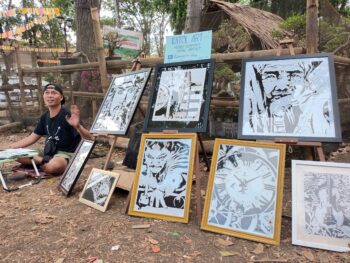(Excerpts from a paper delivered at the panel on ‘Davao Beyond the Headlines: An Interdisciplinary Investigation’ during the 2016 Philippine Sociological Society’s National Convention at the Ateneo de Davao University on October 7, 2016)
The present reality connected to the Presidency of Rodrigo Road Duterte promises to transform the reproduction of power and construction of knowledge in Mindanao which could have far-reaching impact in the entire Republic. Appropriating Pierre Bourdieu, Duterte’s habitus (or his “feel of the game”) places him at a location far different from other Presidents of this Republic, simply because he hails from Davao City and has taken on a strong Mindanawon perspective of both a reading of historical events and contemporary realities.
Given both his political and social capital as President of the Republic (namely the “stakes” in which he as a main player invest himself in), his words and deeds – even in this short period of his Presidency – are bound to create ripples that could ultimately make a dent in terms of the structures of power and sources of knowledge constructs within the game-field of the Philippines in general and Mindanao, in particular.
When he brought to the public’s attention the massacre of Moro men, women and children in the infamous Bud Dajo massacre in Jolo (from March 5 to 7, 1906 where a thousand people were killed) just before and after the recent ASEAN gathering in Laos – where he distributed downloaded photos of that tragic event – he sustained his position regarding how the Moro people have suffered historical injustices both in terms of the colonial past but also in the contemporary period. Thus his administration has strongly moved into an aggressive peace negotiations with the Moro rebel groups in the hope of reversing this historical inequality between the Moro people and the rest of the Filipino people.
The Bud Dajo massacre and that of Bud Bagsak in 1913 along with many other violent responses to the Moro wars during the American colonial period were all part of the US pacification in the Philippines which many young Filipinos hardly know about given the deficiencies in the manner that history is taught in our schools. An earlier event which was another massacre involving a hundred Filipinos – that took place in Balangiga, Eastern Samar on September 28, 1901 is another historic event that may have been glossed over.
The massacre of Moro people persisted until the contemporary era. During the early years of martial rule, on September 24, 1974 more than a thousand male residents were shot dead inside a mosque in Barangay Malisbong, Palimbang, Sultan Kudarat by soldiers and militias.
And through the years there have been casualties owing to the wars that have not stopped until now.
Because of the manner that our educational system has deprived the youth of the land with a revisiting of these important historic moments that define our identity as Mindanawons — by gross negligence in terms of making sure that knowledge of these historical facts are incorporated in textbooks — President Duterte has challenged the Department of Education (DepEd) and Commission on Higher Education (CHED) to correct the historical injustice against Mindanawons and thus incorporate significant local historical narratives into the State’s DepEd-sanctioned textbooks as well as encouraging History teachers to make sure that Mindanao’s history is well covered in their classes. Many local social scientists and educators have also pushed the State educational agencies to give more attention to this matter. In this way the dominance of the north and imperial Manila in the collective memory of our people would give way to a more integrated historical consciousness as more local knowledge constructs are also privileged and appreciated.
This has not been true only in reference to the Moro people but also to the Lumad; the result of which has not led to their empowerment but also sustaining gaps in knowledge systems of our citizenry. The colonizers treated the Lumads in a harsh manner; even their labeling of our indigenous people manifested their sheer racist and condescending postures, referring to them as “wild tribes,” primitive and pagans. At the height of the Americans’ colonization period, there were Lumad communities attacked by American soldiers like those of the Tagakaolos in Malita, the scene where a Datu Mangulayon assassinated General Edward Bolton as a response to their pacification campaign as well as their aggressive drive to push them out of their ancestral domain to set up agri-business plantations.
What followed after our independence only perpetuated the dominance of the outsiders over the Lumads’ lives and resources. This was especially true during the height of martial rule, but which has persisted until today. More ancestral domain territories were appropriated by the State in favor of big corporations and land-hungry peasants from the Visayas and Luzon. It started with logging operations but have now expanded to mining explorations and actual extractions leading to massive displacement of Lumad communities. And when they resisted, they were militarized and driven farther away from the ancestral abode.
The power constructs that allow for the production and reproduction of governance structures – at regional, provincial, local and even barangay levels – have reinforced the grabbing of power and control by the elite including local politicians most of whom belong to political dynasties, oligarchs and representatives of corporate firms as well as the military and police. Their habitus allows them to consolidate their economic capital and expands their outreach of control over a political field determined by guns, goons and gold – very useful during the time of periodic elections.
Into this field comes President Rodrigo Roa Duterte with his own habitus enveloping his Digong persona brandishing his own notion of a strong leader – in the mold of either an apocalyptic folk hero or a fearless action star – who promises radical change.
Endowed with a huge political capital arising from the popular support of the vast number of the citizenry, social capital with his network of social connections and symbolic capital given his image projection that attracts adulation, he is in an extraordinary position to win the game in the game-field which is the Philippine political landscape today. He has also surrounded himself with members of his Cabinet who provides further resources to put the stakes even higher in terms of effecting radical change that could lead to structural changes.
Since his election campaign up to the present, he has challenged the centralized structures of the State governance system by proposing a federal system. He has vowed to end the oligarchs’ control of the economy; he has manifested a strong support to the anti-mining drive of his Secretary of the Department Environment and Natural Resources (DENR), Ms. Gina Lopez. He appointed a left-leaning peasant leader to head the Department of Agrarian Reform (DAR) who is set to push for a genuine land reform more radical than CARP. He has placed Mr. Jun Evasco, a known social reformist to head the government’s anti-poverty agenda. He has put an end to the dislocation of the Lumads and the killing of their leaders and paved their way for their return to their ancestral domains. He promised there will be no demolitions of informal settlers without clear relocation sites. And above all, he has promised to end all kinds of rebellions and wars plaguing our populations especially in Mindanao by forging peace talks with both the CPP-NPA-NDF (Communist Party of the Philippines-New Peoples Army-National Democratic Front) and the Moro rebels, as well as running after the Abu Sayaff until they are pulverized.
In this connection, he provides us a new scenario of power sharing with those who for almost fifty years were considered the enemies of the State and were subject to arrest and imprisonment on account of their subversion of the democratic nation. He has given his peace negotiators a lot of leeway to deal with the Moro Islamic Liberation Front leadership assuring them that he fully supports a peace negotiation with them. Even the “rebel-on-the-run” leader of the Moro National Liberation Front – the discredited Nur Missuari charged with the crimes related to the Zamboanga siege – has been provided some legitimization as the Norwegian kidnap victim of the Abu Sayaff was first presented to him before he was turned over to the State functionaries. And look who his recent guests were at a dinner in Malacaňang: no less than the members of the top hierarchy of the CPP-NPA-NDF to the consternation of some disgruntled military men upset with this act of dining with the enemy.
Indeed, the field of power and knowledge constructs in the country today is very fertile for the planting of Duterte’s vision of a radical change needed by the body politic. Only time will tell if this juncture of our history will ultimately lead us to that moment when the trees of these efforts will bear fruit; and if we will still be around during that time when it will be ripe to pick the fruits.
But there are those among us who have worries of the future, as we see a dark cloud hovering; and under this cloud lurks shadows that forebode of still more tragic things to come. Already there is a growing concern as to the more than 3,000 killings that have taken place in view of President Duterte’s drug war; many of which can be considered extrajudicial killings. This field of governance has proven to be quite problematic, as power to decide on who lives or dies lies in the hand of only the President and his Philippine National Police officials, with a backing of his political allies and members of the military. The concentration of power within this elite group – who are mainly male and militaristic in perspective – has spawned a knowledge perspective of what primarily ails the nation that needs to be fought with all the “goons, guns and gold” that the State could mobilize. This has resulted in the rise of a Foucaldian landscape where the powerful’s gaze arising out of the panopticum of Malacaňang is concentrated on this phenomenon.
This knowledge perspective is contrary to a post-modern reading of the root causes and nature of drug addiction and the ensuing treatment required to those who are addicted to all kinds of chemical and alcohol substances. The power-that-be’s take on the drug menace is already considered outdated and passe by those who would know better but are not consulted in the process of finding out the Habermasian “best argument” as to how this menace should be faced for the greater good of the body politic.
And for now, one of the big mistakes of the Duterte Presidency has been to demonize and sacrifice the discourse of human rights, just because those in power desperately want this war against drugs to succeed, come hell or high water. [Redemptorist Brother Karl Gaspar is Academic Dean of the Redemptorists’ St. Alphonsus Theological and Mission Institute (SATMI) in Davao City and a professor of Anthropology at the Ateneo de Davao University. He is author of several books, including Desperately Seeking God’s Saving Action: Yolanda Survivors’ Hope Beyond Heartbreaking Lamentations, and two books on Davao’s history launched in December 2015 — Davao in the Pre-Conquest Era and the Age of Colonization and Si Menda u gang Baganin’ng gitahapan nga mao si Mangulayon. He writes two columns for MindaNews, one in English (A Sojourner’s Views) and the other in Binisaya (Panaw-Lantaw)]







